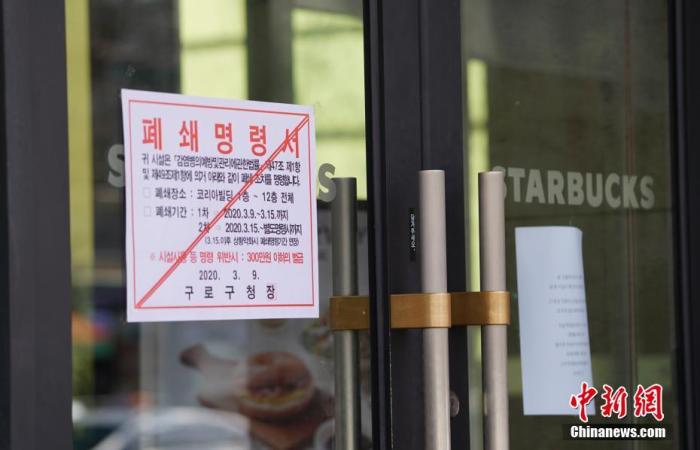China News Service, April 29. According to reports from the Korean media, South Korea ’s Central Epidemic Prevention Headquarters reported on the 29th that as of 0:00 on the same day, South Korea added 9 new cases of newly diagnosed crowns at 0:00 the previous day, with a total of 10,761 confirmed cases.
Yin Taihao, head of the epidemic prevention team of the Central Emergency Response Department of South Korea, said at a regular press conference on the 28th that it was exactly one hundred days since the first confirmed case of the new crown was reported in South Korea. South Korea has experienced a national crisis and the current epidemic situation has stabilized, but it is still "on the go" and must not be taken lightly.
On March 13, in Guro District, Seoul, a message was posted outside the office building of the call center that caused the collective infection, saying that the building was closed from the 1st to the 12th floors. China News Service reporter Zeng Nashe
As of the 28th, there were 117 inspection agencies for new crown epidemics in South Korea, and more than 23,000 cases could be detected in one day. There were 639 screening clinics and more than 600,000 people were tested as of the 27th.
In addition, South Korea has introduced walk-in screening clinics and drop-off screening clinics, which provide a reference for most countries.
In these 100 days, there were 3720 medical personnel participating in the treatment, including 3020 medical personnel in Daegu and Gyeongsangbuk-do. The South Korean government designated 74 designated hospitals for infectious diseases, and set up 18 life treatment centers in the country that specialize in the treatment of mild patients.
Yin Taihao expressed his gratitude to medical staff, volunteers, and management personnel, and pointed out that the epidemic is still in progress. The public must remain highly vigilant before the development of therapeutic agents and vaccines, and observe the hygienic rules such as hand washing, and implement them strictly before May 5. Measures to maintain social distance.
He emphasized that once a group infection occurs, there is a possibility of rapid spread, so it is particularly important to control the group infection as much as possible. The South Korean government puts the surveillance system in the first place.

